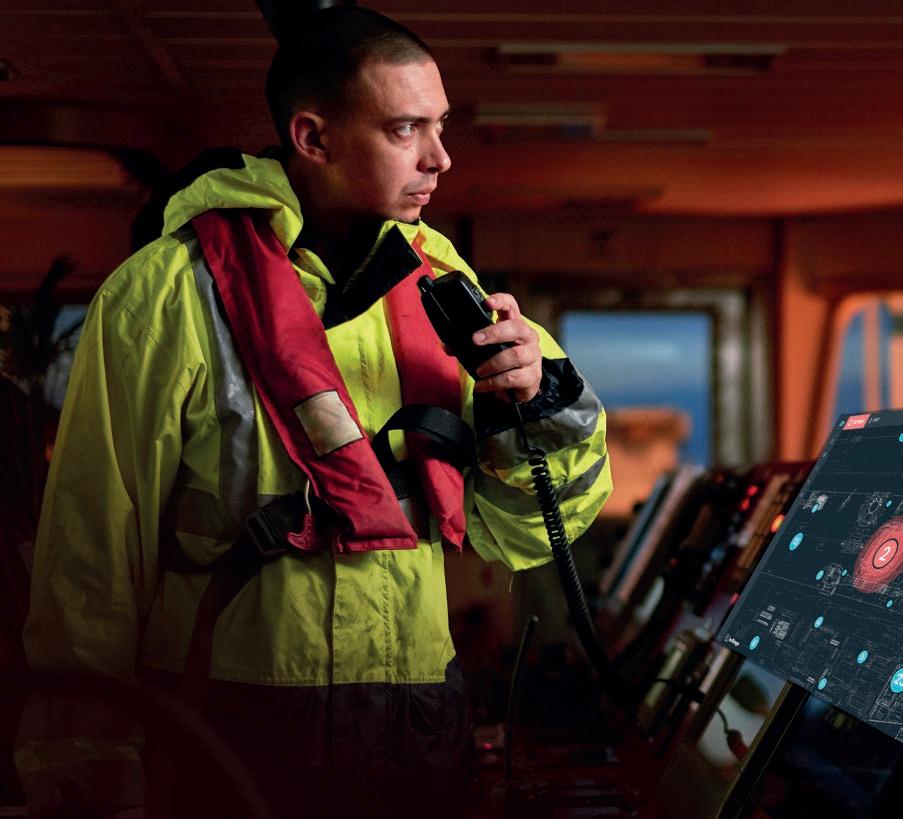
7 minute read
shipbuilding Connecting wirelessly for safety
Connecting wirelessly for safety
“THERE ARE AS MANY, AND MORE, UPSIDE ECONOMIC CONSEQUENCES OF A GREAT SAFETY CULTURE AS NEGATIVE FINANCIAL CONSEQUENCES OF POOR SAFETY PRACTICES. IT’S QUITE OBVIOUS WHICH SIDE SHIPPING COMPANIES SHOULD BE ON, AND OUR MISSION IS TO HELP THEM”, SAYS JOHN ROGER NESJE, CHIEF EXECUTIVE OF SCANREACH.
Advertisement
ALL PHOTOS COURTESY OF SCANREACH. As we all know, or certainly should, the Internatonal Conventon for the Safety of Life at Sea (SOLAS) ensures the minimum standards of safety to which all ships fying the fag of a contracted state must adhere. It requires those responsible for a ship to comply with the Internatonal Safety Management Code (ISM), with individual ships issued with a Safety Management Certfcate (SMC) that has to be renewed
The In:Range wireless network solution enables sensor data to be wirelessly transmitted from nodes throughout a ship.
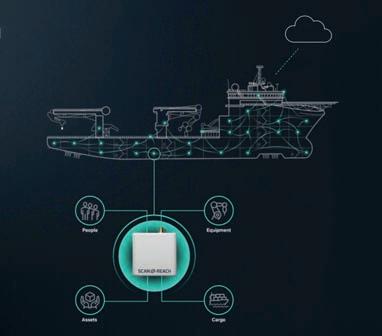
Sensor data feeds directly into bridge monitoring and control systems.
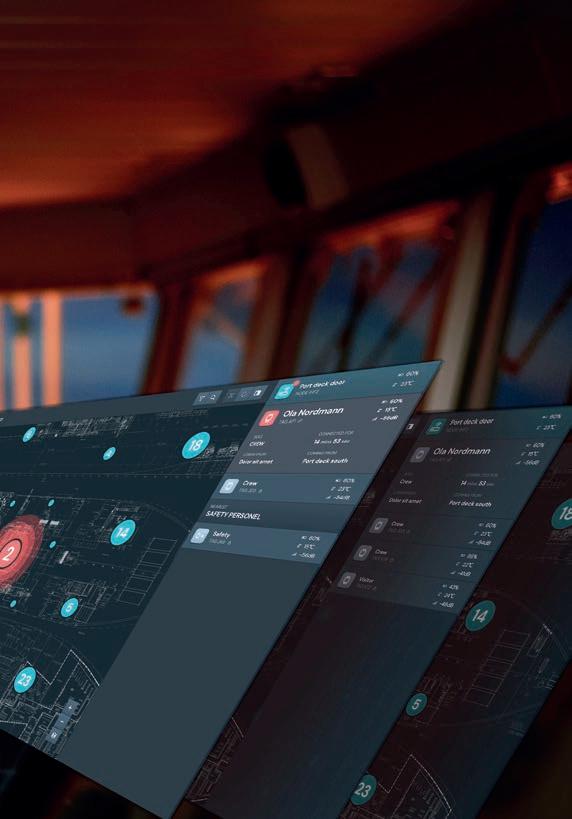
every fve years. The Maritme Labour Conventon (MLC) also sets minimum requirements for working and living conditons for seafarers, including occupatonal safety.
Still lagging on safety
Despite these regulatons, the global shipping industry is stll struggling with safety issues. Poor implementaton and/or breaches of SOLAS or ISM contnue to be a major reason for vessel detentons by portstate control (PSC) around the world. The 2019 annual report of the Paris MoU clearly shows that ISM was the main detainable defciency area, whether it was fre safety, safety of navigaton or life-saving appliances. As ships have been and are becoming increasingly complex and are bulging with advanced technology, ofcers and crew as well as onshore personnel are being pulled in multple directons. Besides mental health issues and fatgue, this pressured environment could lead to safety routne oversights and checks being missed. According to global insurer Allianz, “Almost 15,000 marine liability insurance claims between 2011 and 2016 show human error to be a primary factor in 75% of the value of all claims analysed. This is equivalent to over EUR 1.3 billion of losses. Given the role of human error in so many incidents, the quality of crew and shipowners’ overall safety culture are of increasing importance to risk assessment.” “Human error may also be a contributng factor in up to 96% of marine accidents”, Allianz indicates.
A key to proftability
Safety plays a big part and should never be viewed as just another operatonal issue competng for atenton. Mr Nesje is convinced that a successful business involves a whole lot more than just its fnancial performance. “You’re playing a risky game if you don’t make it a top priority, also as an economic strategy. Safe and efectve operatons are key to being proftable.” No shipping company can aford to be laissez faire. “First-rate safety management is crucial for optmal crew working conditons and welfare, complemented by technology that supports compliance. The price of getng it wrong can be high. A less than optmal safety culture can mean your assets are underperforming, your seafarers are not as motvated as they should be, while preventable accidents resultng in injury or the death of a crew member can result in punitve damages and associated costs”. Failing to adequately address safety can also signifcantly damage a company’s reputaton, especially in the case of detentons. For example, a vessel with a low safety score from Rightship is hardly a great advertsement, and might cause charterers and cargo owners to have second thoughts. “That’s obviously bad for business”, says Nesje.
Direct and indirect costs
Other potental losses as a result of accidents include evacuaton from a ship, medical bills, sick leave and repatriaton if necessary, lost employee hours, trading downtme, crew replacement, maintenance costs or an unscheduled visit to a drydock, polluton costs, and cargo damage. Indirect >>

With digital interfaces designed to deliver instant situational overview, the bridge knows where everyone is on the ship in real time.
costs could come in the form of raised insurance premiums, penaltes from maritme authorites, legal fees in case of injury claims, and management overtme spent on compliance issues. According to the Internatonal Shipping Federaton, “The indirect costs of maritme accidents are estmated to be around three tmes the direct costs associated with injuries, deaths, property damage, and oil spills”. Numerous studies in diferent industries have shown that companies that prioritse a strong safety culture can atain higher levels of productvity. “In shipping, it makes sense that happy crews that are confdent in the safety functon of a ship contribute to the high performance of the ship. Morale is more important than people would like to admit, I think”, voices Mr Nesje. “Safety is a central value of doing business and should be an integral part of all actvity on board a vessel, as well as rooted in company values.” A premium safety culture creates economic value in terms of increased productvity, beter decision making and efectve communicaton in the ofce and at sea, reduced loss events, reduced personnel turnover, reduced training costs, enhanced customer trust, and potentally favourable insurance terms.
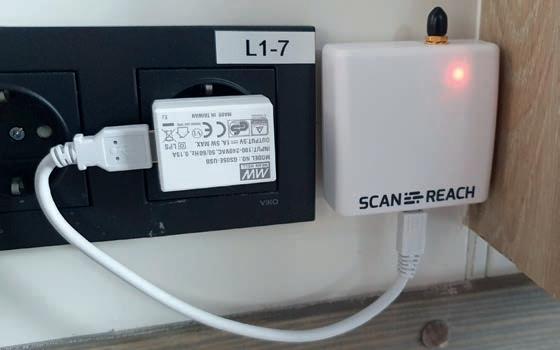
IoT revolution
Commentng in the Allianz 2020 Shipping and Safety Review, Allianz’s Global Head of Marine Risk Consultng Rahul Khanna states,
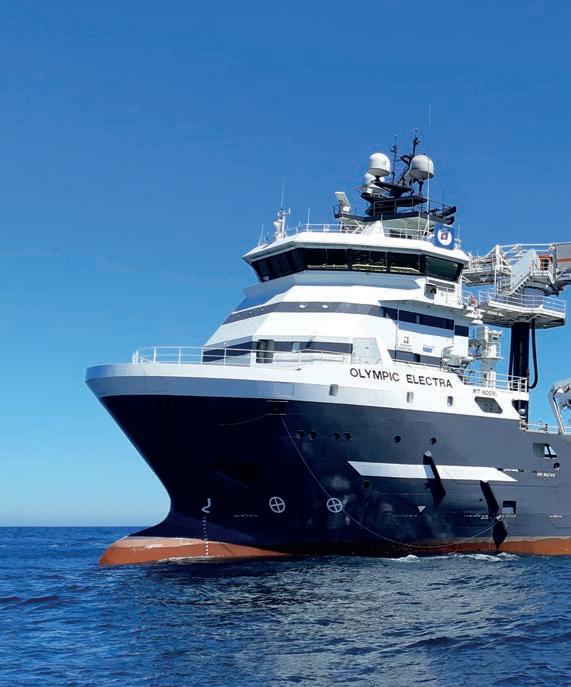
The world’s frst wireless IoT platform enables personnel and asset control in complex and confned steel environments removing the need for expensive cabling.
The system also works for offshore installations.

“Shipowners will face additonal cost pressures from a downturn in trade (due to the impact of Covid-19) and will undoubtedly put efciency measures in place. We know from past downturns that crew and maintenance budgets are among the frst areas that are cut. But it is important that safety and maintenance standards are not impacted by the downturn. The next few years will likely be a difcult tme for the shipping industry. However, we hope the industry will not undo all the good work of previous years and let safety and risk management standards slip.” Echoing these sentments, Mr Nesje adds, “There are many advisors out there who can help companies improve the safety culture in general, but clearly, advanced technology plays a big role, and that’s where we come in. With our ground-breaking wireless technology, we are driving an IoT revoluton in shipping that really supports safety”.
Penetrating metal
ScanReach cracked the ‘billion-dollar problem’ of wireless communicaton in a steel environment (known as the Faraday cage efect where steel bulkheads and decks block wireless signals) at an afordable price. The company’s In:Range wireless network soluton enables sensor data to be wirelessly transmited from nodes throughout a ship, either fxed or carried as wearables. The data feeds directly into bridge monitoring and control systems. “The ship functoning as a single connected entty is a huge step forward and opens up a sea of new applicaton opportunites to take vessel safety and performance measurement to the next level, at a fracton of the cost”, Mr Nesje explains. “Existng sensors can also be easily integrated into our system, for fre detecton, pump sensors, anything.” “Especially with regard to crew health, the IoT-connected ship will help enormously as wearables give you full and instant oversight of Persons On Board (POB). With digital interfaces designed to deliver instant situatonal overview, the bridge knows where everyone is on the ship in real tme. Should a seafarer fall or get injured, the bridge can react immediately. Furthermore, you can pinpoint exactly where in the water someone is in case of a Man Overboard (MOB)”, Mr Nesje adds. This applies not only to ships but also ofshore installatons such as rigs, wind farms, and aquaculture, including gangway control.
Gas detection
With IoT detecton, the bridge also knows instantly if poisonous gases are present in enclosed spaces or tanks, while wearables provide an added level of safety and instant feedback to seafarers undertaking checks or maintenance. “Fatalites due to gas inhalaton are tragic and avoidable; we want to contribute to making that a thing of the past,” states Mr Nesje. He hopes ScanReach’s wireless IoT platorm will become de facto on a big chunk of the world feet. “Who knows, wireless connectvity may also become a regulatory necessity in future, while marine insurers may in tme require it as part of loss preventon or reward companies that do so. Full onboard connectvity is a major value driver. A typical In:Range plug-and-play installaton with 80 nodes on a ship with 40 crew members will cost around EUR 10,000 per year, or just EUR 25 per day, including baseline hardware and service. We think that’s a very reasonable price to pay for increased safety preventon versus what you might lose if something goes wrong.” Investments made in safety are considerably cheaper than the cost of a lost life or injured seafarer. “Our soluton is proven and can make a big diference. That’s what gets me out of bed in the morning and it’s a great feeling”, Mr Nesje concludes.










